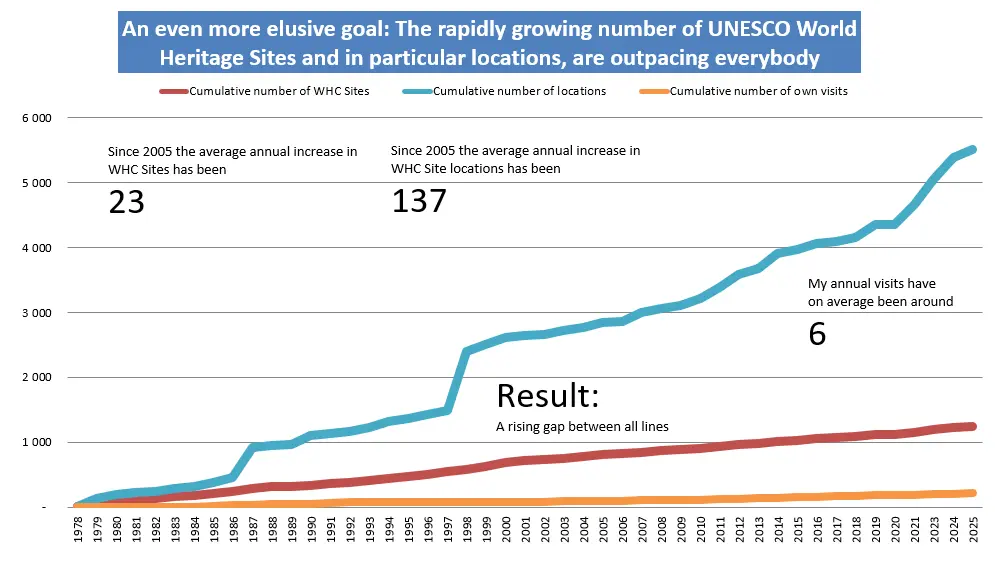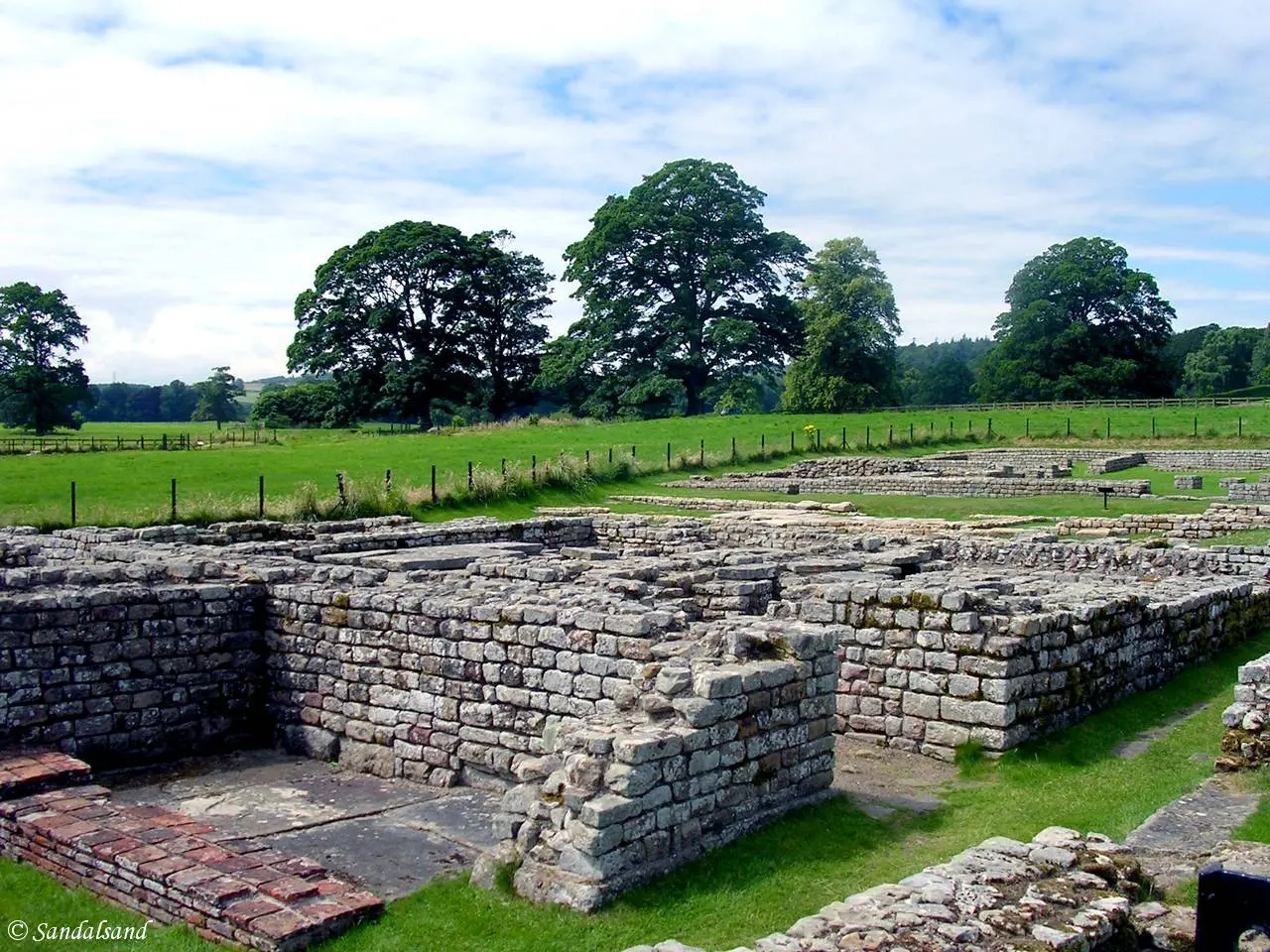UNESCO says there are 1,248 World Heritage properties. But look closer, and you’ll find they’re spread across at least 5,506 separate locations. That’s more than four times the headline figure. So, what’s going on?
From simple to sprawling
When the World Heritage List began in 1978, things were straightforward: one country, one site, one location. The early inscriptions were clear-cut—think Aachen Cathedral, a single building in a single city.
But by the late 1980s, the picture began to change. More and more sites were being listed as serial properties—collections of separate locations grouped together under a single name. By the late 1990s, the pace had accelerated. In just the last 5–6 years, the number of locations has surged.

What this graph shows is that the number of locations (blue line on top) is on the rise. It happens on a faster pace than the less rapidly growing number of World Heritage Sites (red line). Since 2005, to pick a random year, the average increase in site locations has been 137, whereas the annual average number of new WH sites has been 23.
The hidden numbers
UNESCO doesn’t publish location statistics. I’ve asked AI tools, checked Wikipedia, and consulted specialist heritage sites—no luck. Their own website can’t reliably search for “serial” sites, and scraping is off-limits.
So I went old school: manual searches, map checks, and cross-referencing descriptions. The result? At least 250 properties with multiple locations, totalling those 5,506 spots. And that’s a conservative count.
Sites, locations, and how they multiply
A “property” is UNESCO’s official term for a site on the list. A “location” is one physical place within that property. Some remain singletons forever. Others balloon over time.
- One stays one: Aachen Cathedral (1978) is just that—no more, no less.
- Small expansions: The Natural and Cultural Heritage of the Ohrid Region (1979) grew to cover two countries and two locations.
- Massive growth: Hadrian’s Wall (1987) evolved into Frontiers of the Roman Empire, now 420 locations strong. Add related inscriptions—Lower German Limes, Danube Limes, and Dacia—and the Roman frontier claims 876 locations.
Pilgrimage routes tell a similar story. Santiago de Compostela’s Old Town started with two locations in 1985. Now, counting later additions, Spain and France share 98.
The biggest of the big
The following table shows the top-15 of World Heritage serial properties, i.e. with numerous locations.
| Locations | Name |
| 758 | Rock Art of the Mediterranean Basin on the Iberian Peninsula |
| 420 | Frontiers of the Roman Empire |
| 277 | Frontiers of the Roman Empire – Dacia |
| 139 | Funerary and memory sites of the First World War (Western Front) |
| 137 | Qhapaq Ñan, Andean Road System |
| 126 | Historic Centre of Saint Petersburg and Related Groups of Monuments |
| 111 | Prehistoric Pile Dwellings around the Alps |
| 108 | Nord-Pas de Calais Mining Basin |
| 102 | Frontiers of the Roman Empire – The Lower German Limes |
| 93 | Ancient and Primeval Beech Forests of the Carpathians and Other Regions of Europe |
| 78 | Routes of Santiago de Compostela in France |
| 77 | Frontiers of the Roman Empire – The Danube Limes (Western Segment) |
| 60 | Camino Real de Tierra Adentro |
| 56 | Belfries of Belgium and France |
| 54 | The Persian Caravanserai |
This phenomenon is not confined to Europe—serial properties appear worldwide.
Is more always better?
The trend raises questions. Does every single rock art panel need to be listed? Must every Roman watchtower be counted? Could representative examples achieve the same heritage protection without bloating the list?
When one property spans hundreds of locations, it risks becoming harder to manage—and easier to forget.
The visitor’s dilemma
For travellers chasing UNESCO sites, the question becomes personal: what counts as a visit? If you’ve seen one Roman fort, or one beech forest from a serial property, is that enough?
My own rule mirrors the one at WorldHeritageSite.org: if you’ve experienced a representative example, it counts. When I visited one of the 93 beech forests in 18 countries, I felt I’d understood its “outstanding universal value”. I didn’t need all 92 others.
UNESCO isn’t designing the list for bucket-list collectors—but as serial properties expand, the game gets trickier.
Read more
UNESCO is the obvious basic source of this article. I have in addition consulted WorldHeritageSite.org, a member organisation with a number of informed articles, as well as Wikipedia.
Look up Sandalsand’s main page about the World Heritage Sites. I have written a few posts about this previously. Read up on Been there…, Ticking places off a bucket list and The elusive goal of visiting all World Heritage Sites.
There is also more interesting stuff to delve into in the Travelling and World Abstracts sections.


